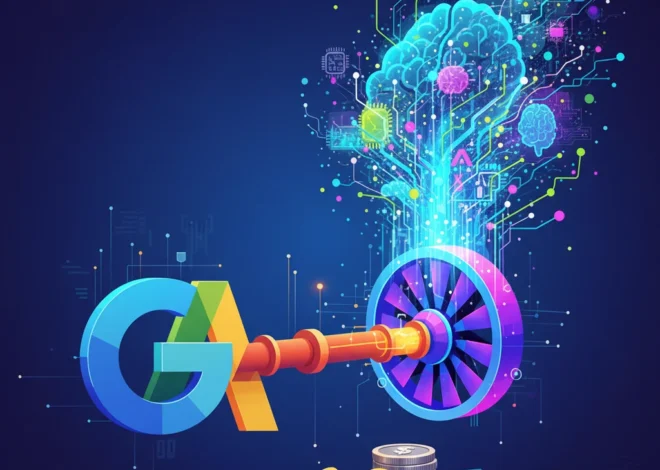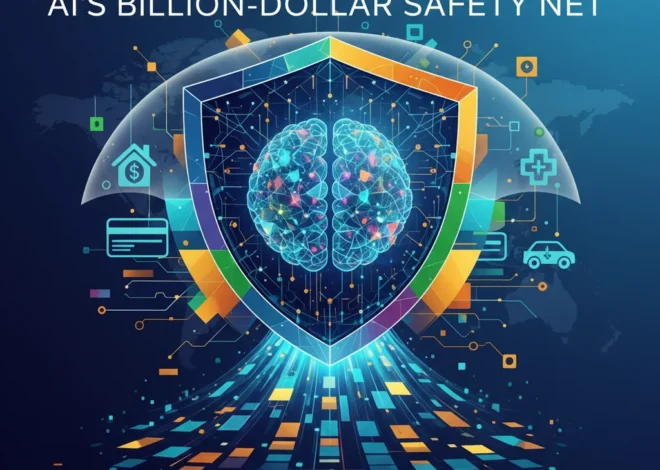Decoding ‘Project Hyperion’: Why a Record $50B Wall Street Deal is a Game-Changer for AI and Your Tech Career
On the surface, it sounds like another headline destined for the back pages of a financial newspaper: a massive corporate bond sale, codenamed ‘Project Hyperion,’ shatters all previous records. You might see the eye-watering numbers, shrug, and get back to your code, your pitch deck, or your product roadmap. But that would be a mistake.
This isn’t just a story about debt, interest rates, and institutional investors. This is one of the most powerful signals Wall Street has ever sent about the future of technology. It’s a multi-billion-dollar vote of confidence in the very industries we work in, from artificial intelligence and cloud computing to SaaS and cybersecurity. That record-breaking pile of cash is about to become the fuel for the next wave of digital innovation, and it has profound implications for every developer, entrepreneur, and tech professional.
So, let’s pop the hood on this financial behemoth, translate the Wall Street jargon, and understand what it truly means for the tech world.
What Exactly Happened? Demystifying the ‘Hyperion’ Deal
First, let’s quickly break down the basics. What is a corporate bond sale? In simple terms, it’s like a company taking out a massive, publicly-traded loan. Instead of going to a single bank, the company borrows money from thousands of investors (like pension funds, insurance companies, and asset managers). In return, the company promises to pay back the loan with regular interest payments over a set period. It’s a common way for large, stable companies to raise cash for big projects—like building new data centers, funding R&D, or acquiring other companies.
The ‘Hyperion’ deal, however, wasn’t just common; it was monumental. While the specific company behind the deal is often kept under wraps in these codenamed operations, the scale points directly to a Big Tech titan. We’re talking about a bond sale that reportedly attracted an unbelievable level of demand from investors, allowing the company to borrow tens of billions of dollars at incredibly favorable rates.
To put the scale into perspective, the deal was broken down into multiple parts, or “tranches,” with different maturities. This allows a company to strategically manage its debt repayment over several decades. Here’s a simplified look at what a deal of this magnitude might look like:
| Tranche (Maturity) | Amount Raised (Approx.) | Typical Use Case |
|---|---|---|
| 5-Year Notes | $10 Billion | Funding short-to-medium term software development cycles. |
| 10-Year Notes | $15 Billion | Major cloud infrastructure expansion and automation projects. |
| 30-Year Bonds | $15 Billion | Long-term R&D in foundational AI and machine learning. |
| 40-Year Bonds | $10 Billion | Strategic, ‘moonshot’ projects and future-proofing cybersecurity. |
The most stunning part? The demand for these bonds reportedly outstripped the supply by a massive margin. This overwhelming interest is what allowed the company to “compress the spread”—a fancy way of saying they got a better interest rate than initially expected. Investors were practically lining up to lend money to this tech giant, signaling an unprecedented level of trust in its future financial health and, by extension, the durability of the tech sector itself.
The Code to Continuous Learning: Why Your Tech Team's Best Teacher Is… Each Other
The ‘Why’ Behind the Hype: It’s All About AI and the Cloud
So, why were global investors so desperate to get a piece of this action? The answer isn’t just “it’s a safe company.” The answer lies in the specific, world-changing technologies that these companies dominate.
Investors aren’t just betting on a balance sheet; they are betting on the unstoppable growth of the digital economy. They see a future powered by artificial intelligence, run on a global cloud infrastructure, and managed by sophisticated software. The cash raised in the Hyperion deal is earmarked for exactly that:
- The AI Arms Race: Developing cutting-edge machine learning models requires astronomical computing power and talent. This capital funds the construction of massive GPU-filled data centers and the hiring of top-tier AI researchers and engineers.
- Cloud Dominance: The demand for cloud services continues to explode. This funding will go directly into expanding data center footprints across the globe, improving network performance, and enhancing cybersecurity to protect that infrastructure.
- SaaS and Automation: The future of business is software-as-a-service and intelligent automation. This money fuels the programming and development of next-generation enterprise tools that will automate workflows and increase productivity on a global scale.
Essentially, Wall Street looked at the tech landscape and concluded that the companies building these foundational pillars are not just profitable; they are becoming essential public utilities for the 21st century. As one analyst noted, the demand was so strong it was “one for the history books,” with investors placing orders for over $100 billion in a single day for a slice of the deal.
However, there’s a crucial caveat. This also signals a massive consolidation of power. The capital barrier to entry for competing in foundational AI is becoming impossibly high. While this investment will supercharge innovation within these tech giants, it could also make it harder for disruptive startups to compete at the infrastructure level. The future of innovation might become less about building a rival to GPT-5 and more about creating brilliant applications on top of the platforms these giants are building with this very cash. This is the new landscape ‘Project Hyperion’ is helping to build.
Amazon's AI Glasses: A Delivery Revolution or a Dystopian Future?
The Ripple Effect: What This Means for Your Tech Career
Okay, so a tech giant has a fresh $50 billion in its war chest. How does that translate into something meaningful for you, whether you’re a developer, a startup founder, or a product manager?
For Developers, Engineers, and Tech Professionals
This is a direct validation of your career path. This influx of capital translates directly into:
- Hiring Sprees: Companies will be aggressively hiring for roles in AI research, machine learning engineering, cloud architecture, and cybersecurity.
- Bigger, Bolder Projects: With secure, long-term funding, companies can launch more ambitious, “moonshot” projects that may have been considered too risky before. Your work could have an even larger impact.
- Higher Compensation: The intense competition for top talent in these well-funded areas will continue to drive salaries and benefits upward. Your skills in specialized fields of programming and systems design are now, more than ever, a blue-chip asset.
For Entrepreneurs and Startups
While competing head-on might be tougher, this event also creates massive opportunities:
- A Clear Market Signal: The deal screams where the “smart money” is focused. Aligning your startup’s mission with the ecosystems of AI, automation, or enterprise SaaS makes you a more attractive investment or acquisition target.
- The “Pick and Shovel” Play: As the tech giants build massive AI gold mines, there’s a fortune to be made selling the picks and shovels. This means creating developer tools, specialized APIs, MLOps platforms, and security solutions that serve the growing ecosystem.
- Increased M&A Activity: A cash-rich tech giant is an acquisitive one. They will be looking to buy innovative startups that can accelerate their roadmaps. This deal essentially loads the M&A cannon for years to come (source).
The AI Tutor Will See You Now: How AI is Revolutionizing Corporate Training
The Final Word: More Than Just a Financial Headline
‘Project Hyperion’ is far more than a record-breaking bond sale. It’s a landmark event that crystallizes the financial world’s view of technology as the single most dominant force in the modern economy. It’s the sound of a starting gun for the next phase of the AI and cloud revolution, funded by the deepest pockets on the planet.
This isn’t just about the flow of capital; it’s about the future of innovation. The code you write, the products you build, and the companies you create are at the very center of this historic economic shift. Wall Street has placed its bet—and it’s a massive one—squarely on you.


